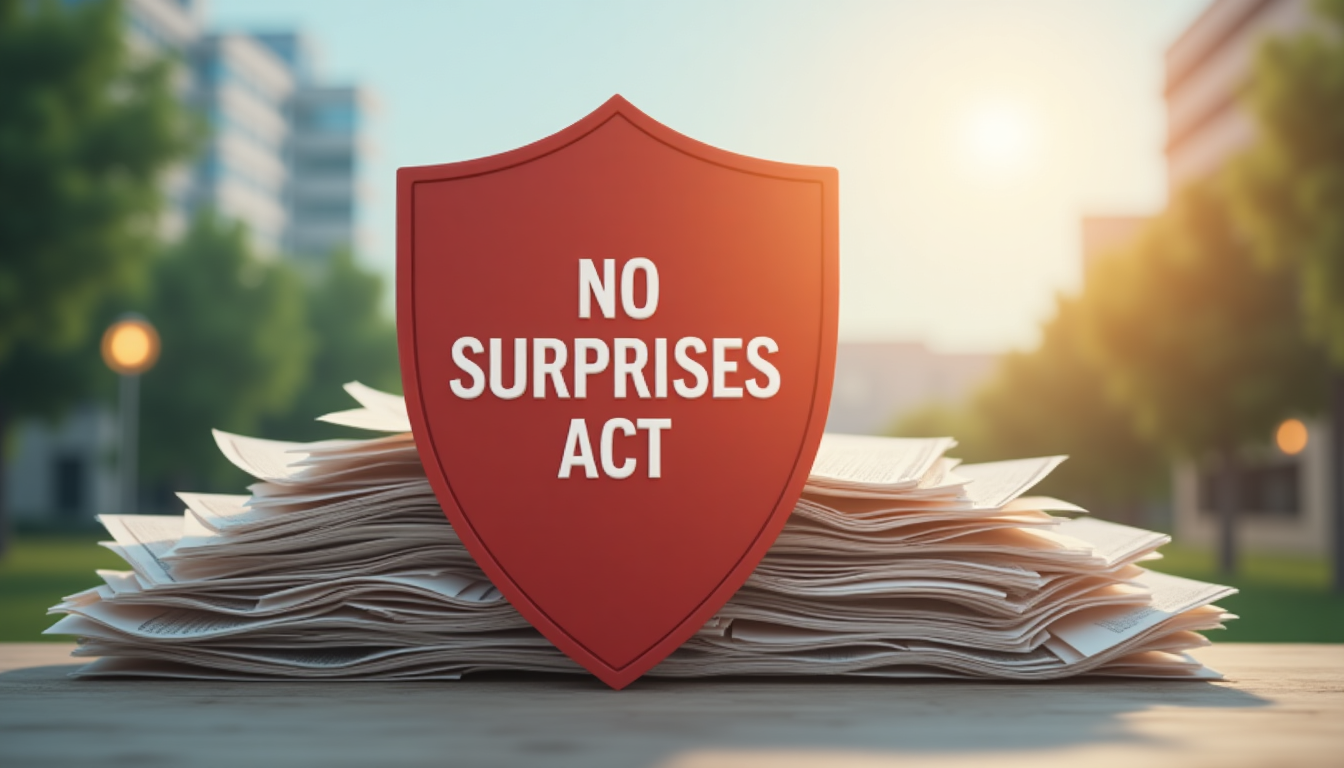How to Use the No Surprises Act to Stop Unexpected Medical Bills
By Sarah Johnson, MSW, Certified Patient Advocate
You survived the medical crisis - the car accident, the mental health emergency, the chronic illness complication. But now comes a new threat: a bill you never expected. A $2,000 charge from an out-of-network anesthesiologist. A $5,000 air ambulance fee. A $900 lab test your insurance denies.
This isn't just paperwork - it's a financial emergency that can derail recovery. I've worked with patients who skipped physical therapy to pay surprise bills. Families who drained college funds to settle ER charges. But since 2022, we've had a powerful tool: The No Surprises Act (NSA).
Let's turn fear into action.
What the No Surprises Act Covers (And Where It Falls Short)
Your Key Protections
The NSA bans balance billing - where providers charge you the difference between their rate and your insurance payment. Covered situations:
-
Emergency Care
-
Non-Emergency Care at In-Network Facilities
- Hidden out-of-network providers (anesthesiologists, radiologists, labs)
- Statistic: 16% of NSA disputes involve radiology services [2]
-
Air Ambulances
- Ground ambulances remain unregulated federally - check state laws [1]
Important Limitations
- Doesn't apply to routine doctor visits or voluntary out-of-network care
- Doesn't reduce your deductible or coinsurance amounts [3]
3 Real-Life Examples: How the NSA Protects Patients
Scenario 1: The Emergency Room Surprise
What Happened: Maria's son broke his arm at a Little League game. They chose an in-network ER, but the orthopedic surgeon wasn't in their plan. Pre-NSA, she owed $3,800.
NSA Protection:
- Hospital must charge in-network rates
- Maria only pays her $500 ER deductible
Scenario 2: The Anesthesiologist Loophole
What Happened: James scheduled knee surgery at an in-network hospital. Unknown to him, the anesthesiologist was out-of-network.
NSA Protection:
- No balance billing allowed
- Dispute resolution handled between provider and insurer [4]
Scenario 3: Air Ambulance Emergency
What Happened: After a rural car accident, Leah needed air transport. The service wasn't in her network.
NSA Protection:
- Leah pays only in-network costs
- Remaining charges negotiated through Independent Dispute Resolution (IDR) [5]
How to Fight a Surprise Bill: Your Action Plan
Step 1: Get a Good Faith Estimate (GFE)
- Required for uninsured/self-pay patients
- Recommended for insured patients scheduling non-emergency care [3]
- Pro Tip: If final bill exceeds GFE by $400+, file a dispute at CMS.gov/nosurprises [4]
Step 2: Analyze Your Explanation of Benefits (EOB)
Watch for:
- ⚠️ "Out-of-Network" labels
- ⚠️ Charges above your deductible/coinsurance
Step 3: File a Formal Complaint
- Contact billing department in writing
- Cite NSA protections (Sample script: "This appears to violate NSA Section XX. Please adjust.")
- Escalate to IDR within 4 business days if unresolved [4]
Statistic: Providers won 77% of arbitration cases in early 2024 - verify all claims [2,6]
Where the NSA Falls Short: Understanding Coverage Gaps
Ongoing Challenges
- High deductibles: NSA doesn't cap out-of-pocket costs (14M Americans have >$1,000 medical debt) [7]
- Mental health disparities: Some plans limit therapy coverage despite parity laws [FACT CHECK?]
Rural Healthcare Barriers
- Fewer in-network options increase NSA reliance
- Statistic: 44% of rural patients delay care due to cost concerns [7,8]
How to Strengthen Your Financial Defense
While the NSA provides crucial protections, proactive steps maximize your security:
- Document Everything
- Save GFEs, EOBs, and provider agreements
- Know State Laws
- 20+ states have stronger balance billing protections [1,9]
- Seek Expert Help
- Patient advocates can navigate IDR processes
Success Story: A Texas family avoided $12,000 in air ambulance charges using state billing laws [9].
Your Financial Health Matters
The NSA isn't perfect - providers still win most disputes [2,6]. But knowledge creates power. When you:
- Demand transparent estimates
- Challenge billing errors
- Use state/federal protections
...you protect both your finances and your right to care.
Remember: Your health recovery shouldn't become a financial crisis.
References
[1] Centers for Medicare & Medicaid Services. (2023). No Surprises Act Implementation Guide. CMS.gov. https://www.cms.gov/nosurprises
[2] JAMA Network. (2024). No Surprises Act Dispute Resolution Outcomes. JAMA Internal Medicine. https://jamanetwork.com
[3] Kaiser Family Foundation. (2023). Understanding No Surprises Act Protections. KFF.org. https://www.kff.org
[4] Department of Health and Human Services. (2023). No Surprises Act Enforcement Procedures. HHS.gov. https://www.hhs.gov
[5] Agency for Healthcare Research and Quality. (2024). Air Ambulance Cost Analysis. AHRQ.gov. https://www.ahrq.gov
[6] Health Affairs. (2024). No Surprises Act Arbitration Trends. HealthAffairs.org. https://www.healthaffairs.org
[7] Census Bureau. (2023). Medical Debt in America Report. Census.gov. https://www.census.gov
[8] CDC. (2023). Rural Healthcare Access Study. CDC.gov. https://www.cdc.gov
[9] Texas Department of Insurance. (2023). Balance Billing Protections. Texas.gov. https://www.tdi.texas.gov




